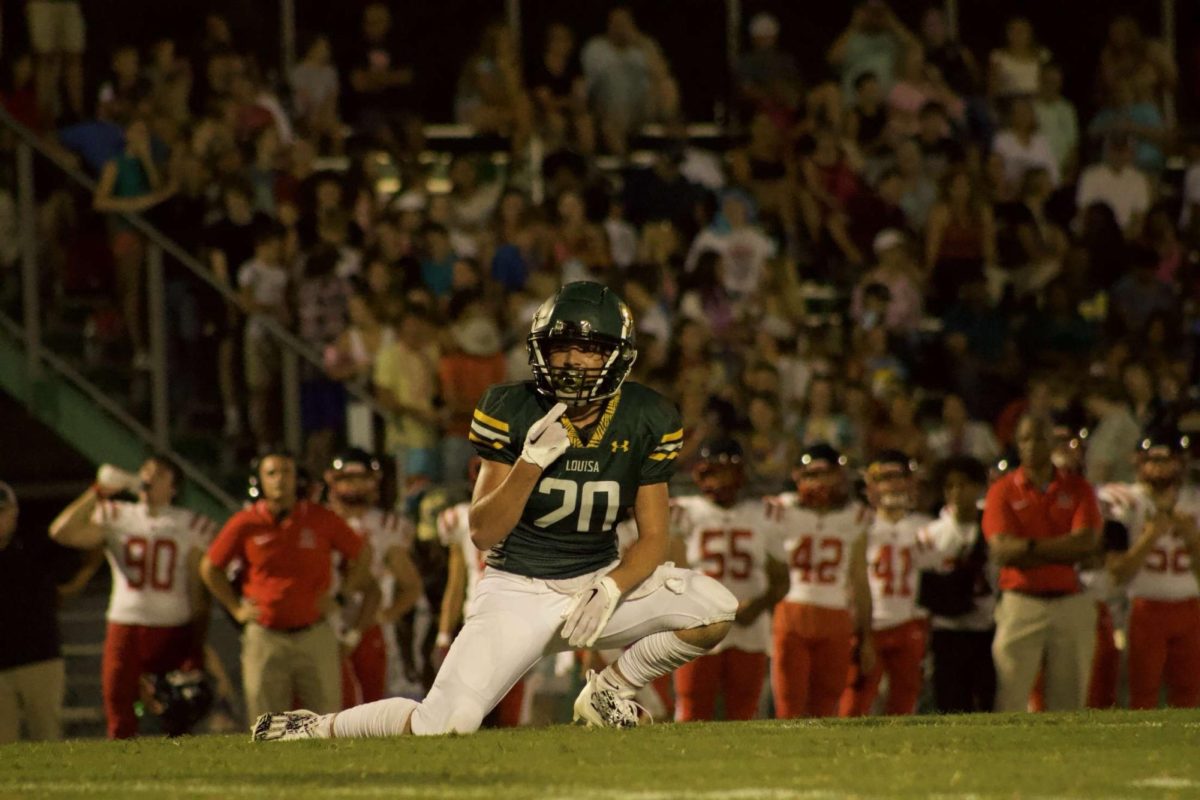Terminology: Cheer
Photo by Louisa County Public Schools
Cheer runs out on the mat to compete.
January 24, 2022
There are two different forms of cheerleading: competition and sideline. Cheerleaders can cheer for sideline basketball, sideline football, and competition cheer. They can participate in one, two, or all of these, depending on what they try out for. In the fall, cheerleaders follow the football teams to home and away games. In the winter, cheerleaders stay at the home court while cheering for girls or boys basketball.
Sideline cheer:
This is the type of cheering seen on the sidelines at football or basketball games. In this form of cheering, minimal stunts are done. Cheerleaders learn cheers and dances that are supposed to motivate sports players and entertain the audience. Cheerleaders are required to memorize cheers and dance moves before the game to make the experience go as smoothly as possible. Cheerleaders pride themselves on facial expressions.
Competition:
Competition cheer is arguably the harder of the two. In competition cheer, cheerleaders compete against other cheer squads in order to find out who is best. Competition cheer requires many stunts and uniformity during a two-minute and thirty-second routine to impress the judges.
Positions:
Back- The back is the safety net of a stunt. If a flyer begins to fall and the base is unable to catch them, the back’s job is to catch them. The back can also help support the weight of a flyer.
Flyer- The flyer is the member of the team that is in the air. Other members hold their ankles to support the flyer.
Base- There are two different bases that help support the flyer in the air. The main base focuses on holding the flyers’ foot up while the assistance base focuses on stabilizing the flyer.






















































